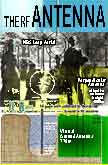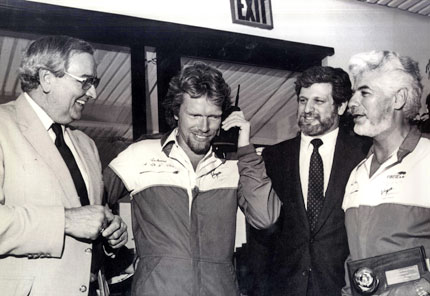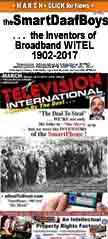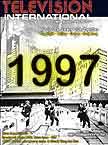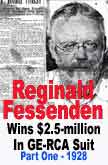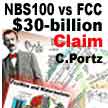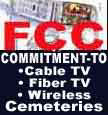•![]() •
•![]() •
•![]() •
•![]() •
•![]() •
•![]() •
•![]()
![]() •
•![]() •
•![]() •
•![]() •
•![]() •
•![]() •
•![]() 20
20![]()
top
ˆ
top
ˆ
top
ˆ
top
ˆ
top
ˆ
top
ˆ
ˆ
top
ˆ
|
• Thank You Virgin Mobile, Google, Yahoo, Murray State University, the Icehouse & those many individual Web Bloggers for your quotes, and earth battery induction demonstrations featured on the Web; affirming Nathan Stubblefield's Wireless Telephone®™© RF-Wifi, WiMax187, and his WiTEL Mobile Trademarks, Copyrights & the WiTEL ethereal coil Effects of Nathan's 1898, 1907, and 1908 Wireless Telephone®™© service marks. • Photo: Nikola Tesla & Nathan at 1902, Wireless Demonstrations
Search Results
Icehouse
|
||||||||||||||||||||||||||||||||||||||||||||||||||||||||||||||||||||||||||||||||||||||||
|
Study of FCC |
Summary |
Gov. Control |
Legal Opinions |
Acknowledgements |
"Wireless" |
CLICK FOR MORE ACKNOWLEGMENTS NBS 01 & 02
SMART DAAF BOYS - The history of radio and tevision and the life and style of Nathan B. Stubblefield. A Four Volume Set written by Troy Cory - Stubblefield and Josie Cory, Desktop Dictionary: Research: Co-Author: Mark Sova. Includes the Cory/Woods/Harris Washington D.C. demonstrations in 1992 at the Smithsonian. Elliot Sivowitch in attendance.
Edwards, Frank 1959 - "Neglected Genius", Stranger Than Science, Lyle Stuart, Inc., pgs. 9-11 [NOTE: I've found that most of the stories that Edwards presents in Stranger Than Science are originally from accounts in FATE Magazine, for which he wrote several articles and was apparently a regular reader. So, it seems likely there is an account of Stubblefield's wireless somewhere within the pages of FATE, which I will check on.]
Hoffer, Thomas W. 1971 - "Nathan B. Stubblefield and His Wireless Telephone", Journal of Broadcasting, Vol. XV, No.3, Summer 1971, pg. 317-329
Horten, L.J. - 1937 - "Another 'Inventor of Radio'", Broadcasting and Broadcast Advertising, January 1, 1937, pg. 32 [NOTE: The entire text of a radio broadcast made by Horton is quoted within the text of this article, and this is what is referenced here.] Kane, Joseph Nathan
1933 - "Radio Broadcast", Famous First Facts, 1933, pg. 423 Lambert, Edward C.
1970 - "Let's hear it for Bernard Stubblefield!", TV Guide, October 10, 1970, pg. 18-20 Monument (author unknown).
1930 - Text from the Stubblefield monument on the campus of the Murray State College in Murray, Kentucky. It reads thus: HERE IN 1902 NATHAN B. STUBBLEFIELD 1860 - 1928 INVENTOR OF RADIO -- BROADCAST AND RECEIVED THE HUMAN VOICE BY WIRELESS. HE MADE EXPERIMENTS 10 YEARS EARLIER. HIS HOME WAS 100 FEET WEST.
Sivowitch, Elliot N. 1970 - "A Technological Survey of Broadcasting's 'Pre-History,' 1876-1920", Journal of Broadcasting, Vol. XV, No.1, Winter 970-1971, pg. 1-20
World Book:
1961a - "Induction, Electric", World Book Encyclopedia, Vol. 9, 1961, pg. 178
1961b - "Radio, History", World Book Encyclopedia, Vol. 15, 1961, pg. 87
Selected Episodes, of the
Stubblefield Story, with limited TelePlay rights,
can be purchased for $39.95 on Amazon.com in the
VHS, DVD category.
At will - Shop at:
Amazon.com,
Search
VHS,
then type
in
TelePlay Preview,
then
click
GO.
Or
Click Here To Go Direct To Amazon.com - TelePlay
Preview
More
Web Browse
Contents
 Part
06h headline/
Acknowledgments ®™©
NBS Authentication - Use
of ISBN - CLICK
FOR MORE FREE USE OF THE NBS
ISBN.
Respectfully
Submitted Josie
Cory ©1956-2010.
Copyright.
Part
06h headline/
Acknowledgments ®™©
NBS Authentication - Use
of ISBN - CLICK
FOR MORE FREE USE OF THE NBS
ISBN.
Respectfully
Submitted Josie
Cory ©1956-2010.
Copyright.
Respectfully
Submitted
Josie
Cory
Publisher/Editor
TVI Magazine
•
• TVI
Magazine, tviNews.net, YES90, Your Easy Search,
Associated Press, Reuters, BBC, LA Times, NY Times,
VRA's D-Diaries, Industry Press Releases, They Said
It and SmartSearch were used in compiling and
ascertaining this Yes90 news
report.
•
• ©1956-2010.
Copyright. All rights reserved by: TVI
Publications, VRA TelePlay Pictures, xingtv and Big
Six Media Entertainments. Tel/Fax: 323
462.1099.
• TVI Publishing™ BOOK GALLERY • #inventory • Music CD Information
VRA TelePlay -- BUY OR DOWNLOAD DVDs
Smart
Daaf Boys -
Products
Troy
Cory Show / DVDs VRA TelePlay
GoogleAds
#07
CyberStore
Television
With No Borders
Return
ˆ
To
Top
08h
Order
Section
•
Price
List
•
#Submit
-- Store - Register
We Preserve The Moment
Return
ˆ
To
Top
09h.
YESearch •yes •
#linkstootherstories
|
|
|
|
|
|
|
|
|
|
|
|
|
/ 10. Tags / Contact
Television With No Borders
Yes90 tviNews S90 Profile4 Ask Priscilla Nathan B. Stubblefield, NB Stubblefield, Wireless Telephone YouTube - STUBBLEFIELD EARTH BATTERY DEMONSTRATIONS Acknowledgements & Thank You's / Feature Story / smart90.com/http://smart90.com/nbstubblefield.com/nbsWiTEL06Earthbattery.htm • / Profiles 4 Smart90, lookradio, nbs100, tvimagazine, Profiles4, DVB-T WiFi-187, WiMax187, RF-300, WiMaxBunny, WiVATS, Patent887, vratv, xingtv, Ddiaries, Soulfind, nb stubblefield, nbstubblefield, Nathan Stubblefield, congming90, chinaexpo, vralogo, Look Radio, China Expo, Soul Find, s90tv, wifi90, dv90, nbs 100, Troy Cory, Troy Cory-Stubblefield, Josie Cory / Kudoads665, Photo Image665, Movies: Google Video / YouTube / LookRadio - Troy Cory Show duration:medium:free - VRA450305 PATENT 887 trademark887 - Television With No Borders
How Do We Do Business?
SEND E-MAIL
Return ˆ To Top
top
ˆ
top
ˆ
top
ˆ
top
ˆ
665
10
120=720


 01.
01.
